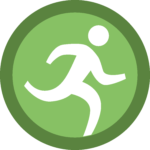3D Running Analysis
3D Running Analysis
Are you ready to revolutionize your run? Say hello to the latest in 3D diagnostic technology.
Whether you’re a seasoned marathoner or just getting started on your running journey, our advanced technology and expert team are here to take your performance to the next level.
Offered At:
Centreville
5900 Fort Dr.
Suite 208
Centreville VA 20121
Sterling
Inside OneLife Fitness-Sterling
46262 Cranston St #115B
Sterling VA 20165
TJC Concierge
A Jackson Clinics Partner
Expert Care On Your Time, On Your Turf
Meet Our 3D Running Program
RunDNA, the cutting-edge 3D running exam offered exclusively at The Jackson Clinics in Centreville and Sterling, VA, is able to break down every stride, providing real-time feedback and specific cues to instantly improve your form.
Precision Insights: Dive deep into your running mechanics with our state-of-the-art 3D analysis. Discover how your body moves, identifies potential risks for injury, and unlocks areas for improvement.
Personalized Recommendations: No two runners are alike, and neither are their needs. Receive tailored recommendations and exercises designed specifically for you, helping you reach your goals efficiently and effectively.
Expert Guidance: Our experienced team of physical therapists and running specialists are with you every step of the way. Get insights, tips, and strategies to enhance your technique and optimize your performance.
Please Note:
We typically recommend 2-5 repeat analyses to track changes in running form and ensure lasting improvements.
RunDNA Runner Portal: Your Running Journey, Elevated
Your Personal Hub: Access your individualized Runner Portal to view your exam results, personalized improvement plans, and track your running milestones—all in one convenient location.
Exam Results at Your Fingertips: Review your detailed 3D analysis results anytime, anywhere. Understand your gait, stride, footstrike, and more, empowering you with knowledge to run stronger.
Personalized Improvement Plans: Stay on track with your customized plan designed by our Running Specialist (Doctor of PT). Explore exercises, stretches, and drills tailored to enhance your performance and prevent injuries.
Mileage Tracking: Keep tabs on your progress with built-in mileage tracking. Set goals, track your runs, and celebrate milestones as you conquer new distances.
Direct Communication: Connect with your Running Specialist effortlessly through the portal. Ask questions, seek advice, and receive ongoing support to ensure you’re always running at your best.
What to Expect:
Comprehensive Analysis: Through our detailed 3D running exam, we’ll analyze your gait, stride, footstrike, and more. Uncover the nuances of your running form like never before.
Individualized Report: Receive a detailed report breaking down your results, highlighting strengths, areas of concern, and actionable steps to enhance your running experience.
Hands-On Coaching: Sit down with our Doctors of Physical Therapy to discuss your report, ask questions, and develop a personalized plan that fits seamlessly into your lifestyle.
Access To:
- The online portal site which will include all gait assessment data (videos and numbers compared to “norms”) and a way to conveniently track other important variables related to running-related injuries and performance
- A daily record to measure and track rating of perceived exertion (RPE)
- A record for tracking any symptoms, and
- The ability to automatically measure acute to chronic workload ratios and training volume by linking to a Garmin watch or Strava account.
Ready to Run Stronger?
Don’t let anything hold you back from your running goals. Schedule your RunDNA appointment today at our Centreville or Sterling location and embark on a journey to a stronger, smoother, and more efficient run.
*A team member will reach out to you within 24 hours to schedule your 3D Running Exam!
Meet Our 3D Running Analysis Specialists
3D Running Exams Are Offered At These Locations:
Centreville
5900 Fort Dr.
Suite 208
Centreville VA 20121
Tel: 703-830-6360
Fax: 888.975.0276
Sterling
Inside OneLife Fitness-Sterling
46262 Cranston St #115B
Sterling VA 20165
Tel: 571.306.4113
Fax: 877.422.7707
TJC Concierge
A Jackson Clinics Partner
Expert Care On Your Time, On Your Turf
Tel: 877.789.0757
Frequently Asked Questions:
Why should a runner do a 3D Running Exam?
- Running mechanics have an influence on both running performance and the risk of running-related injuries.
- The goal of the running assessment is to get information related to a runner’s form, and then use that information to suggest modifications to improve running gait.
- Unlike traditional gait analysis which relies on visual assessment, the 3D analysis uses advanced technology and multiple cameras and sensors to provide more detailed data of your running biomechanics.
What does the 3D analysis measure?
The 3D analysis measures every detail of your running form. It accurately tracks parameters such as: cadence; ground contact time; vertical oscillation; leg stiffness; and angles of the pelvis, hips, knees, ankles and feet at various stages of the running gait cycle.
How would changing running mechanics affect running performance?
By improving running gait, a runner should be able to improve running efficiency and run with less effort.
How would changing running mechanics affect the risk of running-related injuries?
A runner may reduce their risk of common injuries (plantar fasciitis, patellofemoral pain syndrome, Achilles tendon pain, shin splints, etc.) that have been shown to be correlated to certain aspects of running mechanics.
For example, overstriding (landing with the leg too far in front of the body) has been shown to contribute to anterior knee pain and shin splints due to the position of the foot/lower leg and the ground reaction forces that occur during landing.
In this example, a 3D screen can reveal the presence of overstriding mechanics, and cues and/or drills can then be performed to help the runner land with their foot closer to their body.
How do you make recommendations on appropriate running gait modifications?
Running gait modifications are made based off the 3D gait analysis and a review of the runner’s history.
- The system categorizes each runner based off their data and suggests what variables should be prioritized.
- Absolute values of each of the measured variables are reviewed and compared against “norms”.
- Symmetry of the data from right to left sides is also reviewed when determining appropriate modification recommendations.
How do you monitor changes in running form?
By regularly monitoring and reassessing your gait, we can track changes and improvements, make necessary adjustments and ensure you are always moving towards your goals.
Multiple assessments help provide a clearer picture of progress and support long-term success.
We typically recommend 2-5 repeat analyses to track changes in running form and ensure lasting improvements.











